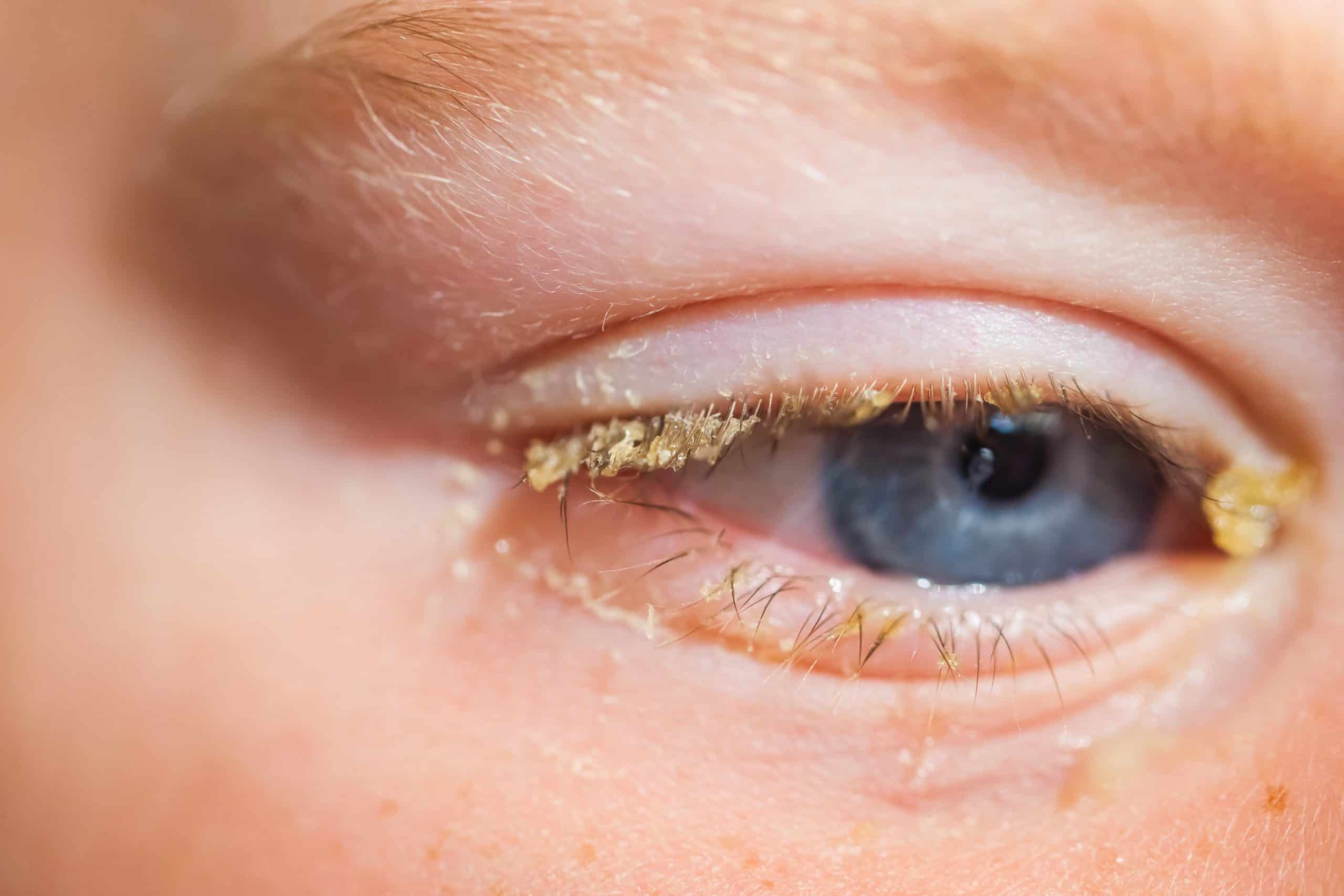Blepharitis is an inflammation of the eyelids and is very common. It usually affects both eyes on the edge of the eyelids, and although rarely serious, it can be an uncomfortable, persistent and irritating problem.
People who suffer from blepharitis often report dry, sore or red eyes. Sometimes, it can cause burning or itching sensation, or the feeling that something is in your eye. Some people may also notice crusty or greasy debris around their eye lashes.
Your Optometrist can determine if you have blepharitis by examining your eyes with a special microscope called a Slitlamp. Careful assessment of your eye surface, tear film and eyelid margins allows your Optometrist to classify the kind of blepharitis present. By knowing the type and cause of blepharitis, the right treatment plan and care regime can be prepared for you.
Classification of Blepharitis:
Blepharitis may be subdivided into three groups. Often there is significant overlap of the signs and symptoms among the groups.
- Seborrheic Blepharitis – Seborrheic is just the technical term for ‘oily’, so this kind of blepharitis is associated with overactive sebaceous (oil) glands. People with seborrheic blepharitis also often have dandruff of the scalp, asthma, hay fever, allergies or a skin condition called acne rosacea.
- Infective blepharitis – Is often caused by staphylococcus, a type of bacteria that is normally found on the skin around your eyes. Reduced immune function may allow staphylococcus to set up an infection in the eyelids, resulting in crusty deposits and sticky tears.
- Meibomian gland dysfunction – Meibomian glands are in the back of the eyelids and are usually responsible for secreting an oily substance that forms part of the normal tear film. If the glands are not functioning properly and start producing a secretion that is too thick, they will become clogged. As a result the eyelids can become inflamed and more susceptible to infection.
Causes:
Blepharitis can be associated with skin conditions such as acne rosacea (oil gland malfunction) or a bacterial infection (staphylococcus). Sometimes eye make-up can cause blepharitis by initiating an allergic reaction that causes swelling of the eyelids and defective tear formation.
Treatment:
If the cause is cosmetics, cessation of use of the offending make-up may be all that is required. Blepharitis is more commonly a long-term condition requiring ongoing maintenance. Usually a simple care regime is all that is required to prevent or reduce the severity of future bouts.
Your Cleaning Regime:
Treatment may include applying daily warm compresses (such as a clean, warmed washcloth) to soften the oily, sticky or crusty substances on the eyelids. Cleansing is the next step and is an essential part of blepharitis treatment. Your Optometrist will recommend the solution to use.
The solution should be gently massaged into the eyelids and lashes using a clean finger or cotton bud, as advised by your Optometrist. Always wash your hand before touching your eyelids.
If eye drops or ointment are necessary, they will be prescribed when the condition is first diagnosed. Drops or ointment should be applied after both the warming and cleansing steps. Your Optometrist may also recommend lubricating eye drops and vitamin supplements to promote ongoing ocular health and comfort.
Prevention:
If you are susceptible to blepharitis, conscientious eyelid hygiene can help prevent a reoccurrence.
- Always wash hands before touching your eyelids
- Wash your hair and face daily
- Wash your eyelids nightly
- Avoid cosmetics
A regular consultation with your Optometrist will prevent untreated conditions becoming worse.

